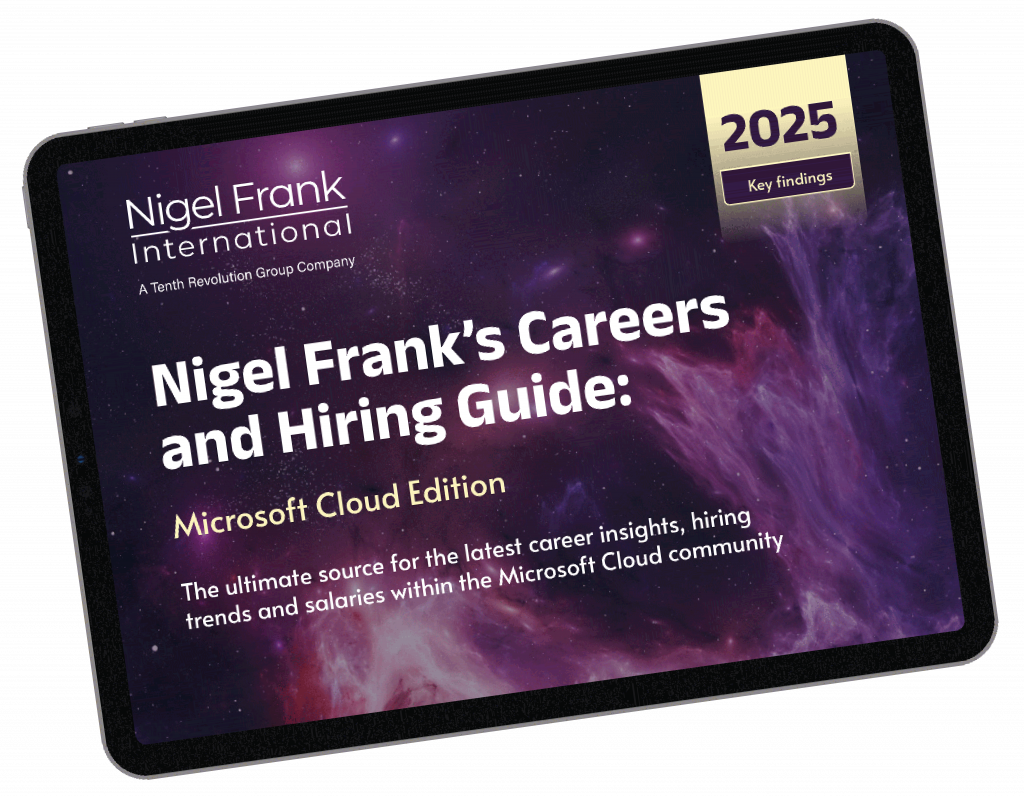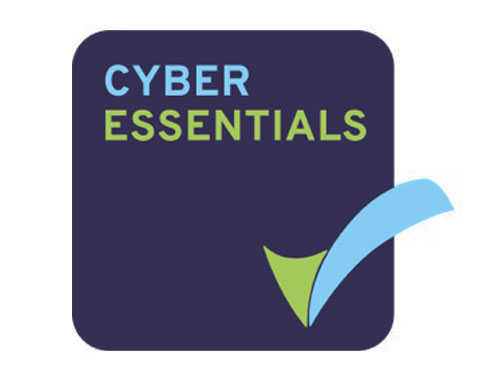Nigel Frank's Careers and Hiring Guide:
The ultimate source for the latest career insights, hiring trends, and salaries across the Microsoft Cloud community
A message from Microsoft

We caught up with Rob to find out what excites him about the Microsoft ecosystem, his thoughts on the community and how our report can help guide professionals and employers to make more informed decisions.
Check out our blog to listen to the full interview, and visit our skills gap page for his insights on how organizations can address the skills gap.
Executive Summary

James Lloyd-Townshend
Chairman and Chief Executive Officer
Nigel Frank International
No other recruitment firm produces a resource like this, and that’s why, over the last 15 years, it’s become firmly established as the must-read guide to the latest workplace trends, sentiments, and developments across the Microsoft Cloud ecosystem.
This publication is aimed at professionals—from entry-level to seasoned experts—who work with Microsoft in their day-to-day jobs or hire Microsoft Cloud talent. And so, whether you’re ready for your next career opportunity, eyeing a promotion, or needing to plug a skills gap in your team, our insights will help you on that journey.
Similar to previous years, we’ve sourced our findings from two main channels: self-reported data from respondents who completed our online survey and statistical analysis of vacancies and placements made by Nigel Frank. By combining this information, which covers more than 66,000 data points, we’ve created a snapshot of what it’s like to work within the Microsoft Cloud ecosystem. Here are a few key findings to set the scene.
So, let’s dive straight into some of our highlights!
Expand to read more from James Lloyd-Townshend
Let’s begin with training and certifications. Among those who completed our survey, 59% hold a Microsoft certification, up slightly from 54% last year. Obtaining a new cert appears to be worth the investment, as those who reported a salary increase post-certification received, on average, a 19% boost to their earnings.
Honing in on workplace benefits, 80% of employees in permanent roles tell us that, salary aside, they perceive perks as ‘important’ when deciding if they will accept a job offer. A bonus and the option to work from home are the benefits most likely to attract potential candidates.
When it comes to losing top talent, a stagnant salary followed by limited promotion opportunities are the top two reasons professionals look elsewhere for a new job. Microsoft Cloud professionals who have taken the plunge to find a new role have received, on average, a sizeable 20% bump in their take-home earnings—proof that switching employers does pay off.
Looking specifically at the hiring process, finding a new Microsoft hire takes an average of six months and two weeks. Over a third (36%) of hiring managers tell us that the increased competition for talent is their biggest tech talent challenge, and 51% believe an IT skills gap exists in the Microsoft Cloud community.
At Nigel Frank, we know that freelancers can be the perfect solution for bridging a skills gap in your team and getting a short-term project over the line, and our survey reveals that contracts now typically last seven months. But, take note: delayed or non-payment is the main reason a contractor chooses to abandon an assignment before it’s completed.
Spotlighting the ever-important topic of equality, diversity and inclusion (EDI), our survey shows that 42% of organizations have invested resources into EDI initiatives, a disappointing drop of 14% since last year. Looking at EDI from an employee’s perspective, 59% believe their employer provides equal pay for equal work, while 64% believe the organization they work for champions equal rights (down from 69% in our last study).
So, what do these findings mean for you and your organization? You’ll have to explore the rest of our guide for further insights on these topics and much more.
To finish, I would like to thank everyone who participated in our survey. Without your contribution, this publication simply wouldn’t be possible. You’ll have the chance to take part again when our questionnaire returns next year, but in the meantime, make sure you bookmark our blog and join Nigel Frank’s community of 132k people on LinkedIn.
Until next time,
James Lloyd-Townshend
Chairman and Chief Executive Officer
Nigel Frank International
What’s in this guide?

Want to size up your Microsoft salary against the latest market rates and uncover your earning potential?
About this guide
This report is based on over 66,000 data points, including self-reported survey information from almost 500 Microsoft professionals worldwide between June and October 2024. Respondents span a range of industries, come from diverse personal and professional backgrounds, and include a mix of professionals and hiring managers.
We’ve validated every survey response using robust statistical analysis and automated data validation rules to be included in the final results. Any data that didn’t pass our validation rules and statistical analysis or was deemed questionable, incomplete, or duplicate was removed so that the results published are meaningful and accurate.
The following should be considered when interpreting the data in this report:
- Not all percentages add up to 100% because some questions have multiple-choice answers
- Answers are rounded for single-choice questions, so not all responses will total 100%
- Findings based on a small sample of results (i.e., under 5%) should be taken as indicative only
- For questions that asked for an open (qualitative) response, there may be some overlap in the quotes used to identify the themes, with quotes illustrating more than one theme
- Themes identified when grouping qualitative responses are displayed in no particular order of importance and are purely representative of the answers given
- Respondents’ views are their own and do not reflect the views of Nigel Frank and its employees



